‘Food forests’ offer living lessons, cool shade at Miami-Dade schools. Program is growing
Students file out to their classrooms at Royal Palm Elementary School into clusters of towering fruit trees casting shade over picnic tables and garden beds.
“I really like the sour tree, it tastes like candy,” said third-grader Dylan Alvarez while squishing a tiny red berry he picked from one of the trees growing on the school campus.
His classmates tried the berry too, and their faces puckered like they just had a piece of Warheads candy. The fruit is called a mulberry, a superfood filled with iron and vitamin C. Everything can be eaten in this school garden, which serves as a living lesson aimed at teaching kids to care for the surrounding environment and to choose healthy food options.
The school is one of 30 public elementary schools in Miami-Dade that are a part of the Food Forests for Schools program planted by the non-profit, The Education Fund. The Miami-Dade non-profit sends a teacher to lead an outdoor classroom session once a week at the schools, and provides additional lesson plans that can be used by other teachers.
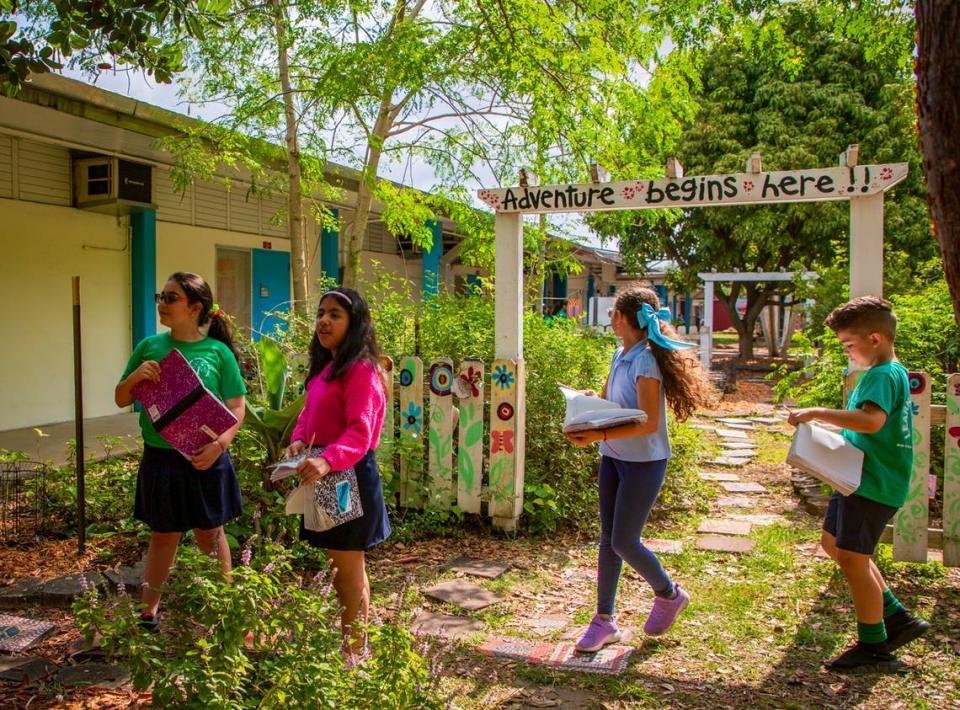
Being outside surrounded by trees, vines, and shrubs gives the students hands-on science and math lessons immersed in nature. One day they might be digging in the soil to identify bugs, and another day they could be learning how to use a circle of banana trees to help enhance compost.
“When they’re learning about photosynthesis they can actually see the sun and see the plants to draw the diagram,” said Eddie Recinos, the program director of Food Forests for Schools.
Not only is it an outdoor classroom, but the Food Forest Program increases the canopy coverage in the neighborhood. Kids are being taught that the trees help cool them down in the urban climate, provide oxygen and minimize flooding.
“It’s about taking care of the earth, by planting plants, picking up trash,” said first-grader Lisamari Morales.
Many school districts and communities run similar urban garden programs but one thing makes Miami-Dade schools program unusual: The harvests from are used in the school cafeteria. The lunch menu is much more varied nowadays with options from the garden, such as kale topped with hibiscus leaves. Using food grown at the school in school lunches is a first-in-the-nation approach, Linda Lecht, the president of the Education Fund told the Miami Herald.
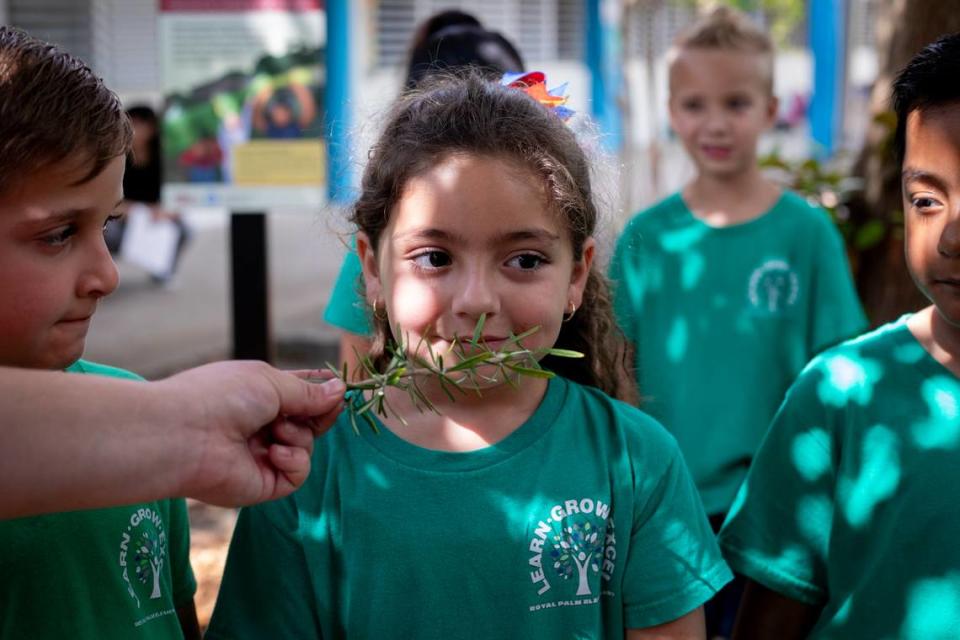
The forests also help put at least a small dent in the county’s issues with increasing extreme heat, particularly in urban swaths where cooling trees and vegetation are sparse. A Miami Herald investigative report published this week found tree canopy is a problem in the county, and some communities feel the impacts of the heat more brutally than others. Low-income communities of color have fewer trees and the canopy coverage in the county is 20.1%.
“It wasn’t a substantial increase in the forest canopy in the surrounding area, but in the school site, it was significant, it’s important for kids going outside that they have that protection from the sun with the canopy above,” Cara Rockwell, an assistant professor at Florida International University who specializes in tropical forestry and sustainable forest management. She did research for The Education Fund’s food forest program.
READ MORE: Miami-Dade County’s urban tree project unable to shade residents from record heat
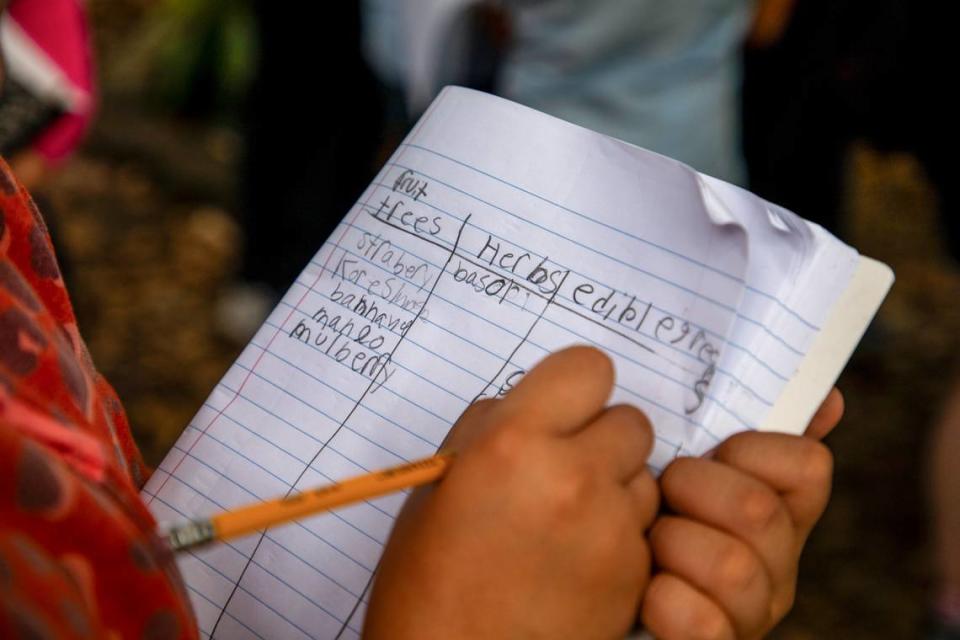
This month, the Education Fund got a boost of $50,000 from the LifeTime Foundation, a nonprofit run by a national fitness company, to expand and maintain the forests. Since the Food Forest Program started in 2015, 30 school in the county have planted food forests. Each one takes about $30,000 to create — mainly because they start with full-grown trees to maximize the shade and the harvest of fruit.
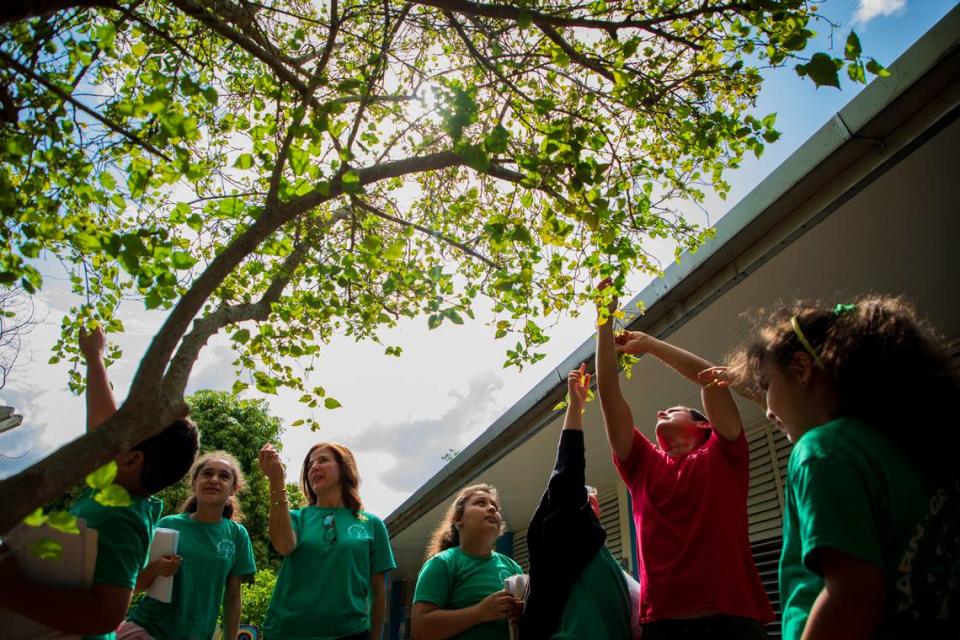
Teachers from The Education Fund make the lesson plans and host the weekly class, but they offer training and additional lessons for teachers who want to use the garden more than once a week. Each week the kids get sent home with food from the garden and recipe cards too.
“I think it’s important to add to your nutritional palate, and go tell mom, go tell dad here’s what we did in class. And maybe they will add it to their menu at home,” said Angie Kasselakis, the food and nutrition officer of Miami-Dade public schools.
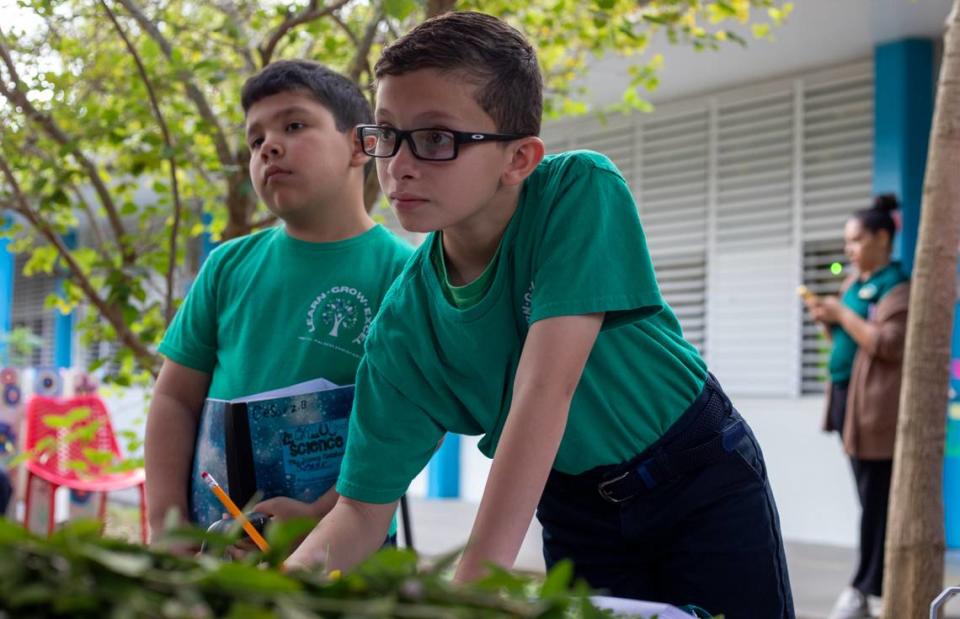
Ashley Miznazi is a climate change reporter for the Miami Herald funded by the Lynn and Louis Wolfson II Family Foundation in partnership with Journalism Funding Partners.

